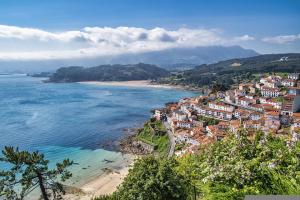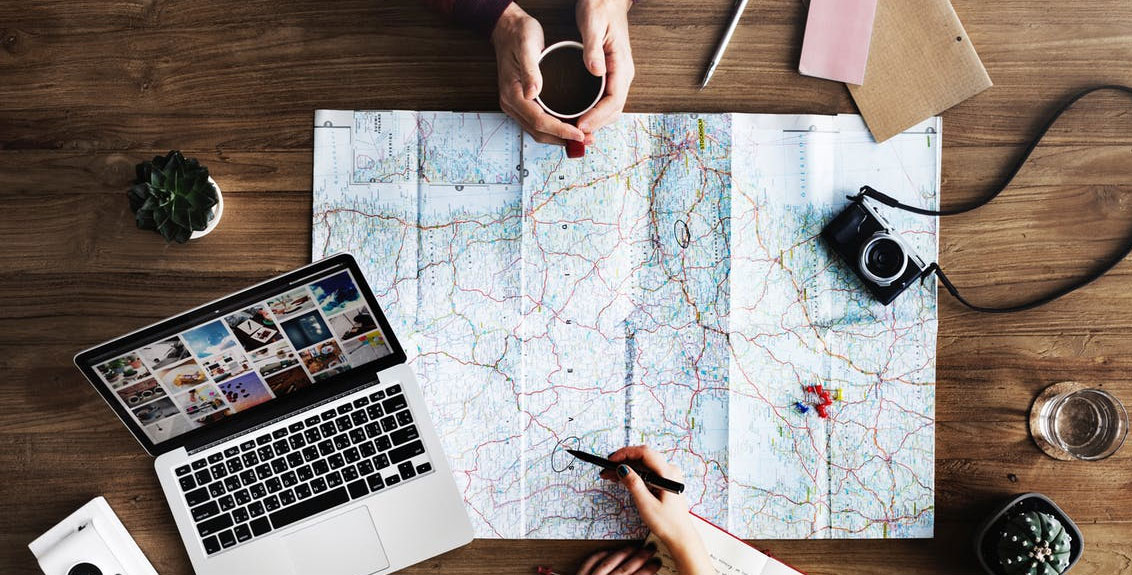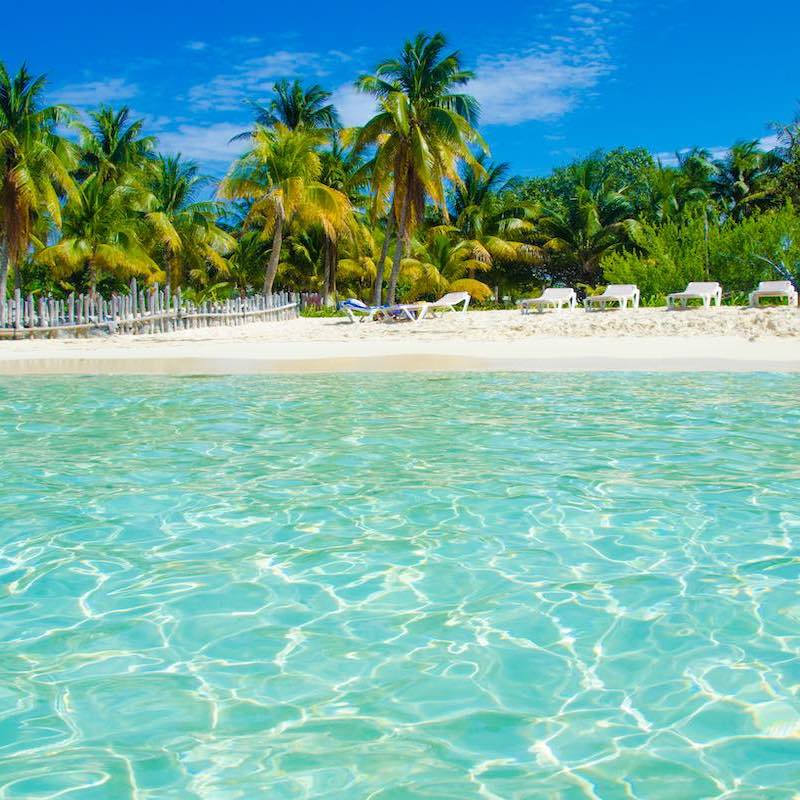[ad_1]
The last two years have been a trying time for the travel industry. Many worked tirelessly to keep it alive during the pandemic shutdowns, and when the world reopened, tourism professionals were met with challenges they’ve never faced before.
This next year will be a new season, however, one in which we hope the travel industry will be thriving rather than surviving.
ADVERTISING
As we reflect on the past year, we are called to set intentions and goals for the next. So we asked – what is the travel industry looking forward to in the future? How can we better our industry? Where are we still lacking?
We spoke with travel advisors, sales folks, hospitality and cruise industry professionals, tour company representatives, and a travel business accelerator founder to discover where the travel industry can improve. Sales, sustainability, and DEI were the three biggest topics that came up. Read on to see where improvements can be made.

Improving Sales After the Pandemic
Although the pandemic was an awful time for travel, it has resulted in some pretty exciting aspects for the future.
“Post-pandemic we are seeing that 44% of leisure travelers are more likely to use a travel advisor and that number is certain to grow,” says Andrea Wright, Vice President of Sales for Playa Hotels & Resorts.
Prior to the pandemic, only 27% percent of leisure travelers used an advisor. The change is likely due to travelers wanting some stability – an expert by their side who can navigate the chaos and instability of travel these days be it due to pandemic, staffing shortages, inclement weather, etc.
Thus, travel advisors are in a pretty good position going into 2023. We saw travelers engaging in ‘revenge travel’ in the summer of 2022, and according to the U.S. Travel Association, travel purchases were 6% higher in September of 2022 than they were prior to the pandemic. Sure, air travel and business travel haven’t reached pre-pandemic levels yet, but on the leisure side of things, travel advisors and sales teams have a lot to work with – and if they want to improve their business success, they should focus on experiences.
Cory Wallace, National Account Manager of Celebrity Cruises, says it best: “People are increasingly becoming less interested in materialism and more focused on experientialism.”
Wallace has seen cruise brands improve their designs, create unique dining options, and upgrade their onboard amenities with rollercoasters, ziplining, and race cars, all with the intent to create the most memorable experience for travelers. This move is backed up by a GetYourGuide study that was recently released. Travelers are so concerned with experiences that 95% “prefer to spend their trip on new and unique experiences.”
But travel advisors and sales teams may want to focus on this next statistic: 62% of travelers in the GetYourGuide study said that they feel a trip is wasted if they don’t experience local culture. Travelers can get that experience with local culture when they travel on land to destinations around the world, but cruises might want to refocus on the experiences offered through shore excursions now more than ever before.
Na-Dena’ is a new tourism joint venture between Doyon, Limited and Huna Totem Corporation that acquired Alaska Independent Coach Tours and Pacific Alaska Tours and has partnerships with Alaska’s cruise industry and Alaskan destinations. Their goal is to expand Alaska Native tourism and they’ll be doing that through experiences, specifically those that highlight Alaska Native voices, perspectives, and traditions.
“Travelers are hungry for experiences that connect them with local culture, traditions, and our local way of life,” says Patrick Duke, Chief Financial Officer of Doyon, Limited, a member of the Tinglit community.
“Na-Dena` will bring forward century-old traditions to share with visitors. By engaging in something new but genuine, visitors can apply it to their own life experience, creating life lessons and meaning from their travels in Alaska,” says Duke.
Trending Now

As an Alaskan Native venture, Na-Dena’ will have local Alaska Native guides, which is something that travelers want. GetYourGuide found that 98% of travelers see the benefit of a local guide because they can show them things they wouldn’t otherwise know about. Beyond that, local guides reinvest in the local community which makes for a positive and longer lasting tourism environment for all.
Duke explains, “On the surface, by expanding tour offerings that visit our Native communities, it creates economic sustainability. Below the surface, economic stability allows our culture growth from within and to then be shared around the world.”
Local experiences and local guides are something that travel advisors and sales teams should keep in mind moving forward. In addition to that, travel advisor and CEO of Zenbiz Travel, Laurence Pinckney wants to see an improvement in education among travel advisors.
“I still am hearing too many horror stories about untrained advisors. Education and training are more important than ever now,” he says. “Clients are coming back to travel advisors, and we have to be on top of our game.”
Travel advisors must invest in education and training if they want to maintain this growing trend of travelers using travel advisors. Career investment may also include gaining first-hand experience of the destinations, cruises, and hotels that they promote to travelers. However, free FAM trips for travel advisors are likely not going to be a thing of the future.
“With over 85,000 travel agents in the US and an estimated growth of 20% until 2031, that’s a lot of travel agents requesting free nights to experience the resorts. I do feel its beneficial for us to host travel advisors and I’m not suggesting we stop that,” Wright says.
She thinks that hospitality companies will likely create FAM programs that cost a fee. From the hospitality perspective, travel advisors who invest in these programs would be seen as taking serious steps in their careers, which would hopefully result in a strong partnership between the hotel and the travel advisor, and ideally, more profits for both in the long run.
“I’d like to create a strong sense of value in all the programs we put together for travel advisors and continue to gain their support, loyalty, and trust. Our goal is to increase their sales which makes us both successful,” Wright says.
If hospitality companies create FAM programs that cost a fee, we hope that they make sure to find ways to help new travel advisors — who may not have a strong client base — attend FAM trips, whether that be through scholarships, discounted fees, or an incentive program. Furthermore, they should make a concerted effort to increase the FAM visits by travel advisors of color and those from other historically marginalized backgrounds like the LGBTQ+ community and the disability community. Scholarships and discounted fees for advisors of these marginalized backgrounds would showcase that the hospitality industry is being intentional in its steps toward a more inclusive, equitable, and diverse sales sector.

Is Carbon Net-Zero by 2050 Actually Achievable?
Sustainability has been the ‘hot’ word of the travel industry for quite some time. Even though the cruise industry and International Air Transport Association are aiming to bring their carbon footprint to net zero by 2050 and we’re seeing the rise of carbon-neutral hotels, we wonder if it’s going to be enough to fight climate change and ensure a long-lasting tourism industry.
The World Travel & Tourism Council reported in October 2022 that the travel industry generates 8-11% of the world’s greenhouse gas emissions, most of which come from transportation. Hotels generate about one percent of global carbon emissions, while aviation is responsible for 12 percent. Unfortunately, one cruise ship can have a carbon footprint that’s greater than 12,000 cars, while travelers on one seven-day Antarctic cruise can produce as much CO2 emissions as the average European in a year.
We know most travel companies, large and small, have sustainability measures in place.
“Na-Dena` proudly continues to innovate in environmental and cultural sustainability,” says Russell Dick, President and CEO of Huna Totem Corporation. “An important part of Alaska Coach Tours is that they are one of few tour companies who use ultra-low sulfur fuel and was the first tour bus company to test the use of biodiesel in Southeast Alaska.”
You can see any airline, cruise industry, and hotel’s sustainable measures on their website. There is no question that the travel industry is invested in sustainability and have initiatives in place. As TravelPulse writer Lacey Pfalz said, “Climate change and wildlife degradation directly affect the travel and tourism industry, probably more so than many other global industries.”
But are we doing enough to really reach our net-carbon-neutral goals by 2050?
Mari Pangestu, Managing Director of Development Policy and Partnerships of the World Bank Group told UNWTO, “Achieving Net Zero by 2050 remains ambitious for tourism and more finance is needed.”
Her sentiments are echoed by the Envisioning Tourism in 2030 report that was published by the Travel Foundation. The report states that the travel industry’s current sustainability initiatives “that rely solely on carbon offsetting, technological efficiencies and biofuels are woefully inadequate.”
They found that the only way that the travel industry’s current net-zero initiatives would work would be through a trillion-dollar investment in “all available decarbonization measures and by prioritizing trips which can reduce emissions most readily – for instance those by road and rail.” The report adds that limits would also have to be made to aviation growth, particularly long-distance trips to 2019 levels until the industry is able to decarbonize.
“The best-case scenario identified means the world can still travel and tourism can support the destinations and businesses that rely on it, avoiding COVID-like restrictions and regulations,” reads the report. “Step out of this scenario and it will be much worse for the planet and tourism. The report emphasizes the huge undertaking required to achieve this future, but shows it is technically possible if the will is there.”
As it stands, we don’t have caps on long-distance aviation trips. There is some government oversight on tourism, particularly in how some cruise lines have been fined for illegal dumping, and the EU is currently trying to adopt a ‘Fit for 55’ law that would require airlines to pay for their carbon footprint and reduce emissions.
Reaching net zero in 2050 doesn’t look likely viable. Protecting the planet, and subsequently, the travel industry, will take some sacrifice and a lot of money, and it requires action now. So we ask: is the travel industry willing to overhaul its sustainability efforts? Where will we get a trillion-dollar investment toward net zero? As an industry, are we open to caps and limits if they will protect tourism and our jobs in the long run? These are the questions we must answer quickly, and then do something about it.

Improve DEI in the Industry
In 2020, the travel industry finally began to take stock of its lack of diversity, equity, and inclusion. While some progress has been made, many in the industry agree we aren’t even close to where we need to be.
Wallace concedes that some improvements have been made when it comes to travel companies being inclusive of people of color. “I love that we are seeing more articles being written for and by people of color, more organizations such as Celebrity are including images that represent diversity and inclusion, and there are brands that are having curated experiences that focus on Black culture,” he says.
However, he, among many others we spoke with, feels like the momentum around DEI initiatives (and seeing them through) is lacking.
“I one-hundred percent believe that DEI initiatives have slowed down in the last year or so. It is not the hot topic that it was during the height of the pandemic,” said Wallace. “I would like to believe that is a by-product of companies having to reset and focus on getting back to profitability, reinventing themselves to be competitive in a very competitive market and making up for the losses that the various brands have been hit with the last few years and not an intentional shift or apathy.”
We hope the same, and yet, there really isn’t any good reason why DEI can’t be at the forefront of the travel industry’s plans right now. In fact, it would benefit their businesses to do so.
Pinckney points out that travel companies are not even being inclusive and mindful of diversity when it comes to simple things like representation in marketing.
“As an example, I just began promoting a cruise on a new ship and unfortunately, they have a brand new video with not one African American in this commercial. In 2022 that is ridiculous,” he said. “Had I seen that commercial before I booked the group, I probably would have gone with another company with a similar product. I think the CEOs must pay attention and direct their marketing departments to be more sensitive to who their guests are and what message it shows when they only show one race in marketing and commercials.”
Diversity in marketing, advertisements and social media coverage is just one of many issues that the travel industry has when it comes to DEI. Accessibility is another, especially for travelers with disabilities.
MMGY found that 96% of more than 2,700 respondents with a disability said that they have faced an accommodation problem while traveling. Eighty-six percent had problems flying and 79% experienced transportation problems. With the growing boomer population, many of which have disabilities or will require accessible travel eventually, we need to do better in terms of making destinations, hotels, and transportation more accessible for travelers. By not doing so, we’re underserving a huge population, one that is willing to spend money and travel – if we make it accessible for them to do so.
Perhaps if we had more people with disabilities at leadership levels, improvements would be made. And that’s the case for all historically marginalized communities. Executive leadership lacks diversity, whether it be in terms of race, abilities, sexual orientation, or gender identity. Unfortunately, the pandemic may have made things worse.
“I find it very discouraging that there are very few Black executives at high management levels. There were at least five I could name before Covid. Now I can’t name any,” said Pinckney.
We know that companies are more successful and have above-average profitability when executive positions are held by a more diverse team, especially as it relates to gender and race/ethnicity. Yet, we still see travel companies with leadership positions primarily filled by cis, white, straight, abled men. Existing travel brands must reconfigure their executive teams. There are plenty of qualified people who have been working in the industry for decades who identify with historically marginalized groups, and when we see these people utilized and invested in by travel brands, we will see the travel industry become more inclusive to travelers of different backgrounds.
Until then, it’s nice to know that tourism business accelerators are popping up, like wmnsWORK. In 2021, Iris Serbanescu founded wmnsWORK to assist women and non-binary individuals interested in entrepreneurship in the travel industry.
“With all the travel associations and organizations that exist to support tourism enterprises, there were truly no ecosystems that focused specifically on early-stage entrepreneurship for women and underrepresented folks,” says Serbanescu.
Her reason for starting the tourism business accelerator had to do with the lack of diversity in tourism leadership.
“An industry that has such a stark disparity between who is doing the work (55% women; no stats available on non-binary folks) and who holds the money and power (92% men), signals an inequitable approach to how decisions are made; most of the people who make up the industry are not considered in decision making,” she says. “This undoubtedly leads to a lot of oppression and many issues in how companies in this industry function.”
While Serbanescu’s tourism business accelerator is focusing on women (which includes women of color) and non-binary folks, her approach is something we should all consider when it comes to diversifying our industry and making it more inclusive and equitable.
As she told us, “I think that’s where the tourism industry really misses not only the mark but also an incredible opportunity because enabling the success of all people — which will mean drastically rethinking how this industry operates — is crucial to ensuring our long-term success.”
[ad_2]
Source link



